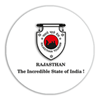Destination Details
This ‘Golden City’ is located close to the Pakistan border and in close proximity to the Thar Desert. Jaisalmer is a former medieval trading center and a princely state in the western Indian state of Rajasthan. The city, also dubbed the “Golden City”, was established in the mid 12th century by Rawal Jaisal and today with many artistic structures, monuments of local historical importance and abandoned villages.
History Of Jaisalmer
Jaisalmer traces its beginnings down to the 12th century. History tells us that Rawal Jaisal, Deoraj ‘s eldest heir, was passed over for Lodurva ‘s throne, and a younger half-brother was crowned king. When Rawal Jaisal came across sage Eesul, he went looking for a new place to set up his capital. The sage told him about Krishna’s prophecy which said that a descendant of his Yaduvanshi clan would found a new kingdom at this same spot. It was in 1156 that Rawal Jaisal constructed a mud fort, named it Jaisalmer after himself and declared it his capital.
Tourist Attractions In Jaisalmer
Jaisalmer Fort :-
Jaisalmer Fort, nestled on the golden sands of Thar Desert, is not just a fort but a mini-town with houses, temples, shops, and restaurants. A UNESCO World Heritage Site. The fort is constructed in the classic style of the royals by local craftsmen. Jaisalmer Fort was initially named ‘Trikut Garh’ since it was triangular in shape and was also built over the Trikuta Hills.
Nathmal Ki Haveli :-
Two architect brothers built Nathmal Ji Ki Haveli in the 19th century. They worked on the haveli from two sides and the outcome is a beautiful blend of the symmetrical construction. Miniature style paintings and mighty tuskers carved out of yellow sandstone are used for decoration.
Patwo Ki Haveli :-
Among the largest and the most elaborately carved havelis in Jaisalmer, this five-storey structure sits proudly in a narrow street. While the haveli has lost some of its early glory, a few paintings and mirror work art can still be seen on the inside walls.
Salim Singh Ki Haveli :-
This haveli was built in the first half of the 18th century and a part of it is still occupied by descendants of the original residents. The high arched roof is supported by carved brackets designed in the shape of peacocks. Legend has it that there were two additional wooden storeys that made it match the Maharaja’s palace in height, but he ordered for the upper level to be demolished.
Gadsisar Lake :-
Built in the 14th century as a water conservation tank, the Gadi Sagar Lake is the best place to visit for sightseeing tour in Jaisalmer, which is today a popular tourist hangout. The lake encircles several temples with the most notable being the Krishna Temple that is located on top of the Tilon Gate.
Sam Sand Dunes :-
Sam Sand dunes Desert Village in Jaisalmer Rajasthan. It is 40 Kms from Jaisalmer City (known as sand dunes of Thar Desert). The exanimate ambiance with stretches of sweeping dunes, camel safari along the breathtaking crests and troughs and crimson horizon at the sunset altogether drops you to a pleasing hinterscape. Don’t miss the rustic and earthy music and folk dance of the gypsies that depicts the rural culture of the Rajasthani folk.
Tanot Mata Temple :-
Some 120 kilometres away from Jaisalmer is the Tanot Mata Temple. Tanot Mata is considered to be a reincarnation of Goddess Hinglaj. There are many stories of how during the 1965 India-Pakistan war, Tanot was under heavy attack and shelling. However, none of the shells or bombs fired at the temple exploded. This reaffirmed people’s faith that Goddess the temple. Post the war, the Border Security Force (BSF) rebuilt the temple and today, the temple is managed by a BSF Trust.
Longewala Border :-
Longewala War Memorial is the spot where the battle of Longewala in 1971 between India and Pakistan was fought. The popular movie “Border” is based on this story. It is the last point up to which civilians are allowed, just 12 km from Pakistan. The museum was constructed right on the spot of the battle and is maintained by Indian Army.
Climate Of Jaisalmer :-
The weather and climate of the Jaisalmer is Arid in nature typical of any Desert region. Summers are hot but winters are relatively very pleasant. Jaisalmer is very hot in the summers. The daytime temperature rusually touches around 42°C. Nights temperature comes down to as low as 25 °C.
In Winters temperature remaining pleasant around 24°C. And nights are chilly with temperature getting as low as 7 to 8°C.
Though western disturbance brings around 15 centimeters of annual rainfall, Jaisalmer remains dry for most parts of the year.
How To Reach
By Air
Jaisalmer Airport is a military airport and supports only chartered flights, hence is sparingly used by travellers. Jodhpur Airport is the closest domestic airport that is functional throughout the year. Major cities like Delhi, Mumbai, Chennai, Kolkata and Udaipur have regular flights to Jodhpur.
By Bus
There are no direct buses from Delhi to Jaisalmer as the 17-18 hour drive is too time-consuming and quite exhausting. You can however switch buses in Jaipur from where a state-run sleeper coach operates regularly. Be sure to book tickets in advance as there are limited seats.
By Train
Jaisalmer is well connected with a wide network of trains covering most of the Indian cities like Delhi, Jodhpur, Jaipur and others.











